The last few years have brought last mile grocery delivery from the margins of food retail to its very heart.
Today an ever-growing number of grocers worldwide sell more through ecommerce than in-store, creating huge opportunities to excel and innovate in the field of logistics.
But such a fast-moving field is not without pitfalls for the unwary. Getting grocery delivery wrong can be fatal to a business, and the biggest risks lie in the “last mile” phase.
In this blog, we’ll explore those risks and how technology has the solutions to optimise the last mile grocery delivery experience.
Key Takeaways
- Demand for grocery deliveries has never been higher, but nor have the standards customers expect - making it a challenging field to excel in
- Last mile delivery is highly expensive for all businesses, due to the demands it puts on fuel and staff, and the expense of failed deliveries
- Technology has the potential to make huge savings and service improvements for businesses in the last mile grocery delivery space by optimising the route and load planning, returns processes, customer experience, and more
- eLogii is a perfect example of a software platform aimed at overcoming all of these problems for grocery delivery firms

What Challenges are Facing Grocery Businesses in 2024?
The grocery business is undergoing revolutionary changes. A recent McKinsey study suggested that up to $700 billion will have been redirected from conventional grocery stores to other channels by 2026 - putting half of all today’s traditional businesses at risk.
Home delivery is seen as one of the potential ways for grocery to reinvent itself.
Of course, grocery delivery businesses have been around for years, but two recent developments have transformed the space:
- Amazon’s success in creating an expectation of next-day or even same-day availability for ecommerce purchases
- Covid-19’s impact on consumer habits, driving many who had previously been sceptical into regular online grocery shopping
So demand has never been higher, but then nor have the standards expected of providers.
And while delivery speed is a big consideration - there are businesses now offering to deliver groceries within 10 minutes of ordering - it’s not the only one.
Shoppers are demanding flexibility as well as speed: grocers are being expected to offer curbside delivery, delivery to workplaces, and online ordering with in-store pickup.
Many are also looking to new models for revenue generation: subscriptions, doorstep upselling, and more.
But as fuel prices have soared in 2024, the economics of delivery businesses have come under huge pressure. Since the start of the year, the price of a litre of petrol has risen by more than 20p, while diesel has risen by more than 30p.
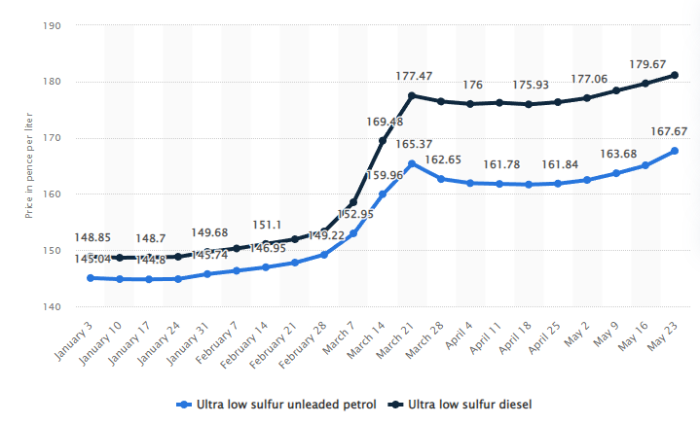
What is Last Mile Grocery Delivery?
In logistics, “last mile delivery” refers to the final leg of the supply chain journey, from the supplier’s distribution centre (which could be a shop, a warehouse, a freight terminal, etc) to the customer.
In almost all B2C grocery delivery settings and a large proportion of B2B instances too, the last mile problem is complicated by the need for one vehicle to make multiple deliveries to different customers at different locations each time it sets out from the distribution centre if it is to be even remotely cost-efficient.
But even then, the last mile phase is extremely expensive relative to other stages of the supply chain process.
It accounts for an average 53% of the total costs of delivery.
Why is Last Mile Delivery So Expensive?
There are lots of reasons, but for the purposes of this blog, we’re going to focus on three.
#1 Heavy Fuel Use
The high price of petrol and diesel throws into sharp relief just how fuel-inefficient last mile delivery can be:
- Multiple deliveries with complex routes between them can lead to unnecessary mileage
- The higher the number of stops, the more time vehicles will spend idling
- Driving slowly in congested areas leads to more time on the road, burning more fuel
#2 Labour-Intensive Activities
All that time spent stuck in traffic doesn’t just cost a business in terms of fuel. It also incurs costs in terms of driver wages. If you try to reduce delivery times by increasing vehicle numbers, that means more fuel cost and more wage cost.
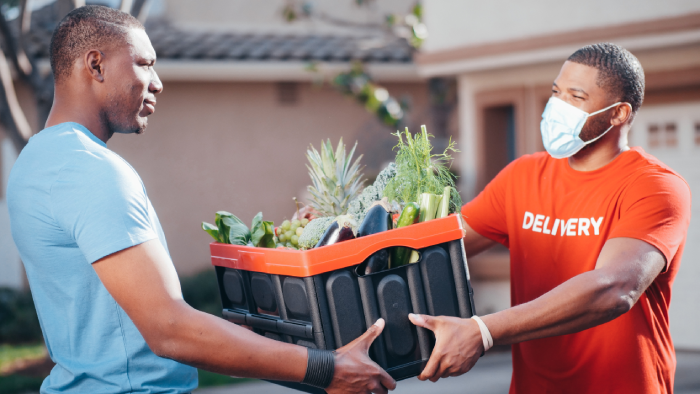
And drivers aren’t the only wage cost here:
- Route planning and dispatching are complex, skilled, time-consuming activities. 42% of fleet managers say that at least one member of their teams spends up to two hours per day allocating jobs to the right drivers, while 16% spend more than four hours per week on scheduling and routing
- Allocating packages to the best vehicles for route efficiency and planning the load order for ease of retrieval is also demanding, skilled logistics work
Failure to invest in your team in these areas can lead to unnecessarily long routes, slow delivery times, driver overtime payments, and failed deliveries.
#3 Failed Delivery Costs
The average failed delivery costs UK businesses £11.60, covering the costs of returning it to the depot, reassigning the package, and sending it out for delivery again.
For groceries, that cost will likely be higher:
- Fresh produce may need to be replaced
- Refrigerated produce may have thawed and be unusable
- Shoppers may not wait for a second delivery attempt where essentials and involved, preferring to cancel their orders instead
5.6% of all UK deliveries fail on the first attempt. That represents a huge, largely avoidable cost.

Solution: Technology Can Save Last Mile Grocery Delivery Costs
No matter what kind of grocery business you run - whether it’s a one-of-a-kind deli, a supermarket chain, a speciality importer, or anything else - technology and automation can help you save money on last mile delivery while providing a first-class experience.
Let’s look at six example areas.
#1 Route Planning
It’s exceptionally difficult for human beings to calculate the shortest, fastest route between multiple points. The “vehicle routing problem” or “traveling salesman problem” is a longstanding challenge in mathematics, and when every extra mile costs money, it’s not a purely academic concern.
Digital algorithms, employing the huge amount of computing power available in the cloud, can carry out these operations far more quickly and successfully even the best fleet manager.
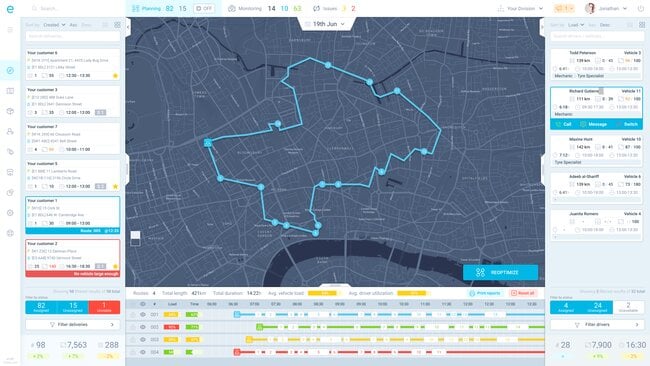
And while there are many different software products, employing their own algorithms, it’s critical to bear in mind all the other factors that an optimal route would need to take into account. For example:
- Traffic conditions
- Time on site (eg unloading, taking to the customer’s door)
- Driver breaks
- Priority deliveries
#2 Load Optimisation
If it’s complex to plan routes for one vehicle, it’s even more complex to do it for multiple vehicles with different characteristics.
Frozen goods need to be carried in refrigerated vehicles, while many grocery items are too heavy or bulky to be delivered by bicycle.
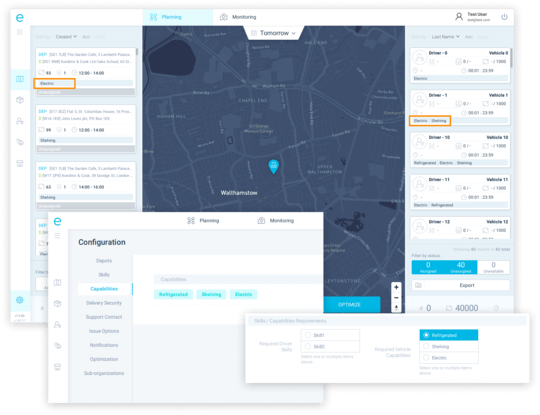
Orders need to be packed into vehicles in an order that makes it easy to retrieve them in the sequence of delivery, and in a way that will not lead to them being damaged in transit.
And many online grocers will provide alternative items if an ordered product is out of stock. Drivers need to be aware of these and able to separate and return those replacement items if they are rejected.
Again, these are problems that computing power can solve far more quickly and accurately than human beings.
#3 Returns Management
We’ve already seen how expensive failed deliveries can be. Minimising that cost depends on two factors:
- Making sure that customers are kept fully informed of Estimated Times of Arrival and any changes to them, to ensure they’re in when the driver arrives
- Providing alternative workflows on what to do if they’re not - whether it’s leaving a delivery in a safe place or returning to the depot for reprocessing
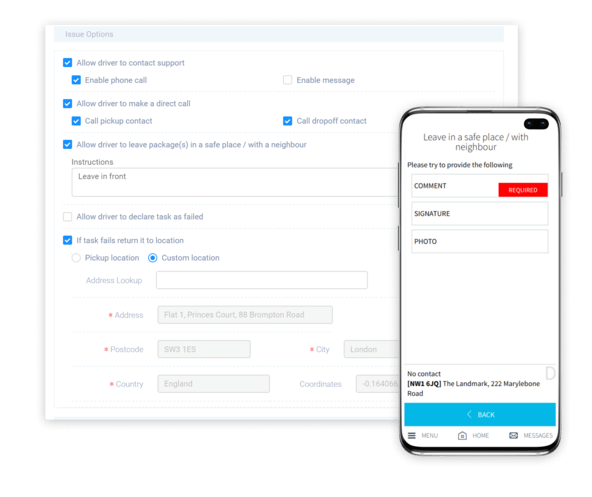
Many route optimisation and delivery management platforms include functionality for sending notifications to customers, but less common is:
- The ability to send dynamic updates while vehicles are en route when ETAs are revised
- The ability to set failed delivery workflows and special conditions/actions on a per delivery basis
#4 Customer Experience
This may not seem like a cost-saving solution at first glance, but it undoubtedly is. The grocery business, far more than most, depends on repeat custom - everything it supplies is consumable or perishable. Nobody buys a carton of eggs and expects it to last the rest of their lifetime!
So grocery businesses have to keep their customers coming back and, in an arena with such intense competition, customer experience makes a big difference
84% of shoppers have said that they would not buy from a business again if they had a bad delivery experience
- 70% of complaints about food businesses derive from delivery problems
- 93% of shoppers say that they want to receive proactive updates about where their orders are
- 75% consider notifications an integral part of the delivery experience#
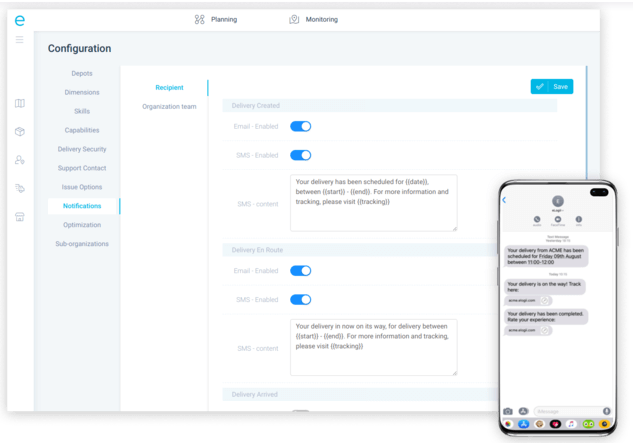
The better experience you can provide to customers, the more they are likely to spend (i) over their total lifetime as customers and (ii) per order.
Delivery management software typically incorporates functionality that works towards quality assurance:
- Driver app GPS allows locations to be identified precisely and ETAs calculated
- The app can also keep drivers fully informed of delivery requirements and track time spent out of the vehicle
- Customers can be empowered to speak with drivers and to leave reviews
- Study of performance analytics can help businesses to continually improve the standards of service they provide
#5 Visibility
One major part of ensuring a good customer experience is confirming Proof Of Delivery (POD). “Lost in the post” was an old joke with roots in real-life experience. In 2022, it’s not acceptable.
Delivery businesses need to be able to confirm POD on-site and have a fully detailed audit trail to review, especially if cash is changing hands.
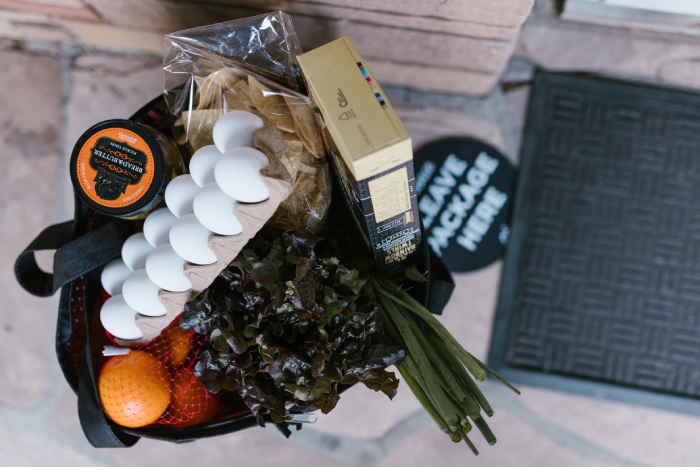
Once again, tech comes to the rescue. Old fashioned dedicated terminals for collecting signatures are no longer necessary. Drivers can use smartphone apps to collect electronic signatures, take photos of delivered packages, scan barcodes or QR codes, etc, and add explanatory notes where needed.
#6 Fleet Sourcing
One final factor we haven’t considered is the huge expense associated with acquiring and maintaining a fleet of vehicles. While contracting a 3PL provider to do it for you has been an available option for a long time, it can be too expensive and inflexible for many small grocery businesses.
One of the most interesting developments of recent years is how technology has facilitated crowdsourcing. In the delivery business, that means drawing on a vast pool of self-employed, more or less casual, freelance drivers as and when you need them and they are available.
This gives your business a lot of flexibility to scale delivery resources up and down as required - for example, to deal with rush deliveries at peak times like the run-up to Christmas.
Crowdsourcing also helps businesses tap into hyperlocal networks, using more, smaller distribution centres, to enable even faster delivery.
Last Mile Grocery Delivery: The Bottom Line
The costs of an inefficient delivery business increase as you scale up, removing much of the incentive to grow your business!
The last mile already contributes more than half of the cost of delivery - and current trends look set to only make it even more expensive.
So finding and locking efficiency into this part of the supply chain is crucial.
Many technology platforms do some of the things we’ve talked about in the last section, but only one that we’re aware of does all of them in a single, integrated package - and that’s eLogii.
